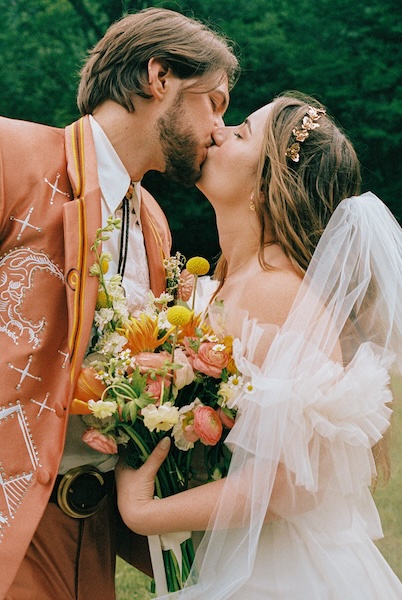Standing the Test of Time: Michael Schumann
January 1, 2010
Michael Schuhmann is a photographer who has not lost sight of the masters of photography. Residing in Tampa, FL, Michael has been a full-time photographer since 1996, primarily photographing weddings, children and families. Although he has been 100 percent digital for some time now, he is a self-proclaimed “blend of yesterday and today.”
While he uses modern technology to capture and enhance his images, he does so sparingly and only with specific images. His photographs evoke the feeling of days gone by, timeless images in a classic style.
Michael’s photography career began as a youngster when he was competing with his friends in karate tournaments, which he would photograph with his father’s Kodak Instamatic. His gear has evolved over the years from Olympus to Nikon and now Canon. Because of his affiliation with the martial arts for more than 15 years, he was able to cultivate his craft and hone his skills, particularly his timing and composition, by photographing the top martial artists in the world. His images have appeared on the covers of many martial arts magazines.
His wedding photography skills developed after being invited to a friend’s wedding, where he photographed over the shoulder of the contracted photographer. Michael then sought out and attended many lighting and posing seminars, but he was not comfortable with the hands-on approach of posing. He eventually found inspiration from photographers like Denis Reggie, Gary Fong and others who at that time were cultivating a more natural hands-off, photojournalistic approach.
Michael’s advice to those just starting out is to attend art classes first to study shape, form, texture and patterns. This educational process is important before learning about lighting and photographic technique. Finally, get involved with professional organizations, mentor with photographers who are doing what you want to do. The friendships you develop will last a lifetime.
Michael has studied with and befriended many of the contemporary leaders in today’s world of wedding and portrait photography. His inspiration, however, comes from photographers from the 30s through the 50s—icons such as Irving Penn, Gordon Parks, Henri Cartier-Bresson, Edward Weston and Robert Doisneau.
Michael has developed meaningful friendships with photographers whom he has met during his journey. These friendships have become more of a brotherhood. “We inspire each other and feed off of one another,” he says. “With friends like Ryan Joseph, Parker Pfister, and Jeff and Julia Woods you have to maintain some pretty high standards.”
In a typical seven- to eight-hour wedding, Michael will capture approximately 2000 images, editing them down to 300–500 or fewer for the bride and groom to view. “With the power of Photoshop and the popularity of plug-ins and action sets, it’s easy for a photographer to overdo it. Delivering 800, 1200 or 1500 images is not right; your client doesn’t need to see all of that junk. You should be able to tell the story with 300–500 images. Within that 300–500, I select 20–30 images that I will ‘Schuhmannize.’ These are images that stand out from the rest.”
Michael tweaks all of his images in Photoshop, but not to the extent where they appear to have been Photoshopped. Some may receive minor adjustments, while others receive more enhancement and retouching; he will convert approximately 200 images to black and white. His time frame in postproduction is approximately three hours to edit 2000 images down to 300–500 and an additional 4–5 hours “prepping and tweaking” before posting the images online, and finally presenting the client with their image collection, which might be 4 x 6-inch proofs or a press-printed book from my lab.
Regarding albums, Michael says, “I start with clean, classic images and keep that look throughout my album design. I want the image to ‘speak.’ I don’t want a flashy page template or Photoshop technique to stand out. I custom design each page with no clutter, no page templates and no gimmicks, which I feel will not stand the test of time. I want my albums and images to be timeless; images that my clients will love today and tomorrow.”
Almost all of Michael’s fine art work is in black and white without overlays or textures. “I want the focus to be the image, not the technique. You have to know when to put down the mouse and walk away from the computer.”
With an abundance of wedding photographers in the Tampa/St. Petersburg area, Michael’s reputation sets him apart from the rest of the pack. With no traditional advertising, his clients come to him by way of referral from satisfied brides and vendors—he supplies the high-end vendors with sample prints and albums. He also maintains an up-to-date liveBooks website, www.photographybymichael.com.
“I really feel that it is important to be able to make changes to your website at any time.
“To succeed, one needs to build a reputation and continually live up to those standards. Refine your eye and feed your soul with anything inspirational. This should include all of your senses. Be sure to go somewhere you haven’t been before and shoot for yourself. Take only one lens with you, thus forcing you to make it work.”
Michael’s reputation extends to his outstanding customer service. “Always under-promise and over-deliver,” he says. “I include a gift to my brides, usually a few extra 11 x 14 prints. It costs very little, but the perceived value is enormous. Little things like this will make you their photographer for life. It is very rewarding to go to a bride’s home a few years later to photograph her baby and the gift portraits from her wedding are on display in her home.”
Michael does a lot of “no-look” photography, just shooting from the hip. He says it helps him be more unobtrusive. People become self-conscious when they see the camera go to his face, so by using this technique, he is sometimes able to capture more natural images.
Michael shoots with two Canon EOS 1D Mark III and a Canon 5D Mark II. His stable of Canon lenses include a 35mm f/1.4, 50mm f/1.4, 85mm f/1.2, 135mm f/2.8, 16–35mm f/2.8 and 70–200mm f/2.8. He will also shoot with a Holga and Contax 645 cameras. He edits his images with iView MediaPro and Lightroom on his Mac, designing the album himself, offering albums with 8 x 10s, 9 x 12s and 11 x 14s. Michael’s weddings are hosted online. His clients select 80–100 images for their book. After the bride and groom choose and he designs their album, he FTPs the images/pages to Burrell Professional Lab in Crowne Point, IN. The final step is sending the pages to his album company, Leather Craftsmen, in Farmingdale, NY.
While Michael remains a classical photographer, one looks at his work and one can see why his images stand the test of time.
Harvey Goldstein from Branford, CT, has been in the photographic industry for almost 35 years. He is a former studio owner and presently edits numerous association newsletters and magazines.




